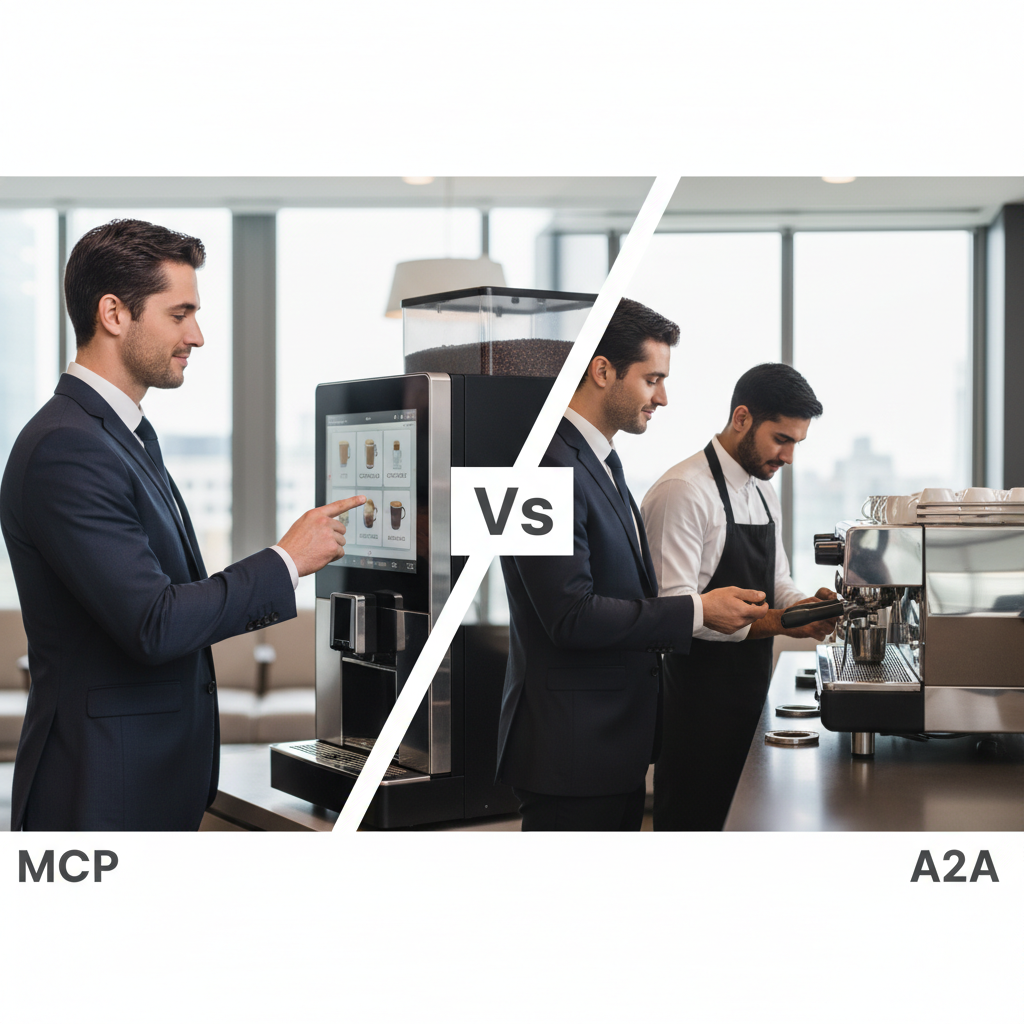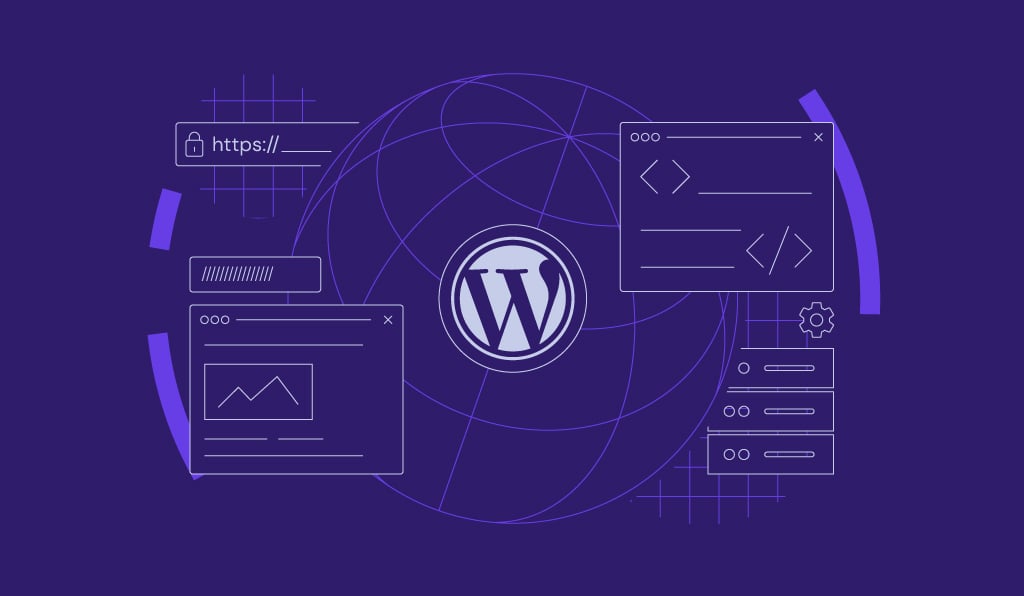
The evolution of AI is moving beyond monolithic models toward networked systems of specialized agents. This requires standardized communication. Two leading open-source protocols — the Agent-to-Agent (A2A) protocol (launched by Google and its partners) and the Model Context Protocol (MCP) — are defining how these intelligent systems interact.
These protocols are not rivals; they are complementary architectural patterns. Understanding where each excels is key to building robust, interoperable, and useful AI applications.
What Is MCP? The Foundation of AI Utility 🛠️
The Model Context Protocol (MCP) is a standardized framework that allows a single Large Language Model (LLM) or AI agent to connect with and use external data sources and tools.
MCP focuses on the Agent-to-Tool relationship. It exposes tools as functions, allowing the agent to determine when and how to call an external service (e.g., calling a calculator, a weather API, or a database lookup).
What Is A2A? The Collaboration Layer 🤝
The Agent-to-Agent (A2A) protocol is a communication standard designed for multiple, distinct AI agents to collaborate, share information, and delegate tasks.
A2A focuses on the Agent-to-Agent relationship. Its primary goal is to enable interoperability between different specialist agents — even those built on different frameworks or vendors — allowing them to work together to achieve a complex overall task.
Architectural Analogy: Making Coffee ☕
MCP is making coffee from a vending machine, whereas A2A is like asking a barista to make a coffee for you.
Key difference
- MCP is the vending machine: pre-programmed, standardized, and immediately executable.
- A2A is the barista: flexible, requiring conversation, and capable of complex, negotiated tasks.
Imagine you are the agent, and you are tasked with getting coffee. You have an “MCP” branded coffee vending machine, which could have many options to choose from (Americano, latte, capuchino), and then you have to provide instructions to the vending machine about the size of coffee (small cup or large cup), then creamer and then sweetener type (sugar vs stevia etc). Now, similarly, when you have an MCP server, it will show you all list of all as tools as functions(). You have to call the right tool to get the correct coffee. You may make mistakes which gives you an error, and retry.
A2A is like asking another barista for a coffee. You would ask this expert coffee maker a description of coffee you need. Make me a Caffe Machiato, with oatmilk, and the barista would make it for you. Notice, the barista could even ask for clarification. In this case, you are creating a task for
Here comes the difference in way you interact
- If you are capable of using the tool yourself, and can make the coffee using the machine, MCP is more direct tool usage.
- If you do want a task yourself, and would prefer an expert to do it for you, you would use A2A
Now lets look at the pros and cons of each method.
MCP: The Coffee Vending Machine
- Interaction: Structured Command
You press a specific button (call a function or tool) with predefined, rigid input (e.g., button B4 for “Black Coffee”). - Partner: Passive Tool
The machine simply executes the command exactly as instructed. It has no autonomy, judgment, or ability to negotiate. - Output: Specific Result
You get a predictable, standardized product (a “tool response”) or error message. - Protocol focus: The interface
The machine’s interface (the buttons and display) must be perfectly clear, standardized, and strictly followed.
A2A: The Barista (Agent-to-Agent)
- Interaction: Collaborative Request
You ask for a high-level task, like “Can I get a cappuccino with oat milk?” (send a task request). - Partner: Autonomous Peer
The barista (the agent) uses judgment and internal logic to fulfill the request, which may involve internal steps like checking ingredients, negotiating details (“we only have almond milk”), or delegating a sub-task (“can you steam the milk for me?”). - Output: Goal Fulfillment
You get the coffee, achieved through the barista’s own orchestrated process. - Protocol focus: The interface
The focus is on the successful completion of the overall task, including the back-and-forth communication and task state tracking.
When to Choose A2A: Simple explanation
When to use MCP?
I will use a tool when I want to get things done my own way. For example, when I want to make my own espresso, I use the the tool myself. This usually means that I know the tool very well, more importantly I have lots of experience with the tool. You then go on to make a special latte and even make a latte art.
However, if I am seeing a new coffee machine for the first time, it is going to take time, with lost of failed attempts. When an agent uses MCP, it looks looks like it fresh every single time, and chooses a tool only based on the description of the tool. The agent also needs to be able to fill in the parameters of this tool correctly and accurately. This works great if the tool presented by MCP server is intuitive and described well. But this becomes a problem when the MCP server lists hundreds of tools to use, and descriptions are not accurate.
When to use A2A?
I will choose a barista when I dont know how to use a tool, and would like an expert. The barista is the expert and can use the tool very well. I give a task to the barista, get it done. You could even give vague descriptions like, “make me a capuchino, but I am lactose intolerant”. The barista could ask you if you want it with “almond milk” or “oat milk”. Notice that the barista is giving you options that aligns with your requests at the same time knows that it is available. The barista would make a nice cappuccino with the little heart shaped art on your coffee. If you were to use MCP, you would have learn of these options and choose it yourself.
This does not work when the task is very difficult to communicate. If I want the barista to create a “Macchiato”, and give instructions on how to do it very specifically, I will give this instruction in natural language. The barista could respond with some clarifying questions, but then it becomes very tricky if the task is very complex to describe it in natural language. Any inaccuracy in communication or the understanding by the remote agent is going to get me an incorrect or atleast a sub-optimal result.
Use MCP when the primary LLM is capable of mastering the tool and needs precise, low-latency control over its execution.
Ultimately: MCP is like using the coffee machine to making your own coffee, A2A is like asking an barista to make a coffee for you.
Developer Playbook: When to Use Which Protocol
MCP Benefits:
- Direct Control: The central agent dictates the exact execution flow and maintains state.
- Simplicity: Best for simple, atomic operations (e.g., fetching a stock price or calculating a math problem).
- Low Latency: Execution can be quick as the LLM calls the tool directly.
Trade-off:
- Tool Management Overhead: The LLM must accurately parse the description and parameters for every tool. This becomes complex with a vast, non-standardized tool library.
A2A Benefits:
- Expertise: Allows delegation to a specialist agent who is better equipped to use specific tools (e.g., a “Database Agent” that knows the schema intimately).
- Flexibility: The receiving agent can manage ambiguity, ask clarifying questions, and use its own internal logic to fulfill a high-level goal.
- Interoperability: Facilitates collaboration across heterogeneous systems and different AI vendors.
Trade-off:
- Communication Overhead: Involves higher latency due to the back-and-forth task negotiation and task state tracking.
- Goal Ambiguity: Complex goals communicated via natural language can lead to sub-optimal results if the remote agent misunderstands the intent.
The most sophisticated AI systems will integrate both protocols. An A2A network allows specialist agents to collaborate on a large objective, and each of those specialist agents may use MCP internally to leverage their own specific tools. These protocols provide the essential communication standards to unlock a collaborative, multi-agent future.
Source Credit: https://medium.com/google-cloud/mcp-vs-a2a-df7bca9ea581?source=rss—-e52cf94d98af—4




